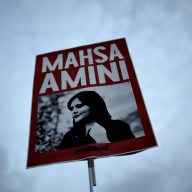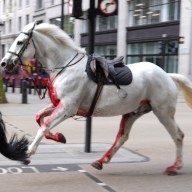 Joel and Ethan Coen’s latest film is the folk-centric “Inside Llewyn Davis.”
Joel and Ethan Coen’s latest film is the folk-centric “Inside Llewyn Davis.”
Credit: Getty Images
With “Inside Llewyn Davis,” legendary directors Joel and Ethan Coen return to the New York City of the early 1960s, a place (if not exactly a time) they haven’t visited since “The Hudsucker Proxy” in 1994. They’re not big fans of repeating themselves — though still might have a “Barton Fink” sequel up their sleeves.
You’ve said “Inside Llewyn Davis” might be your last film actually shot on film.
Joel Coen: No, yeah, we don’t know. It’s sort of an evolving thing because we don’t know what we’re doing next, we don’t know where the technology’s going to be at. It’s possible, I guess. Certainly that’s the way the business is going. People are still shooting on film, though. It’s kind of our preference.
It’s interesting how film is becoming a sort of luxury choice for shooting.
JC: You know, honestly, people say that, but I don’t think it’s more expensive because I think that there’s a rule in show business that any savings that could be realized from new technology, the business conspires to absorb those things and make it cost just as much as the old way of doing things. I don’t actually think it’s more economical. There may be other advantages, though.
One thing I noticed, as a longtime fan of “The Hudsucker Proxy,” is that movie took place in the same city maybe a year or two before this one.
Ethan Coen: Yeah, it’s true! Our other New York movie. That’s about the same time. We’ve written another one that takes place in 1962 in New York.
JC: But that’s true, “Hudsucker” was around the same time. But Norville wasn’t going down to the Village. We did have a juice and coffee bar [scene], though. [Laughs]
They’re very different films, stylistically, but it got me thinking about laying your films out chronologically and watching them.
JC: That’s kind of interesting. So what would be the earliest? I guess “True Grit,” then “Miller’s Crossing.” Then “O Brother, [Where Art Thou],” then…
EC: “Barton Fink,” which was 1941.
How much does the decade a story takes place go into the decision-making about a project?
EC: It goes into the identity of the project. It’s not something you kind of consider in isolation from it. You’re thinking about a story and its characters, who occupy a particular setting. So the setting is a time and place. It’s all one big mush.
JC: Yeah, it’s a big mush. But it’s important. It’s part of what stimulates you in terms of thinking about the story.
EC: It’s only the most obvious way to make the point, but you could say it about each of them. “Miller’s Crossing,” they’re characters, kind of gangsters, who would only be there then. The characters wouldn’t make sense in another setting.
And I guess folk singers in New York, there’s a limited time that makes sense.
EC: Yes. [Laughs]
JC: Then, for instance, people are always asking us if we would ever do a sequel to one of our movies, and the only one that has ever been interesting to us is actually doing a movie called “Old Fink,” which would be [Barton] Fink during 1967, the Summer of Love in San Francisco, when he’s older and a professor at Berkeley.
EC: We’re waiting for John Turturro to get old enough. You don’t want to do one of those makeup jobs, you know?
JC: I think he’s getting pretty close.
EC: He is actually getting pretty close.
That has to be a sensitive conversation.
JC: No, no, he’s into [it]. He’s completely into it. I think he’d be fine with it.
EC: Yeah, [Fink] is a horrible person. He, like, sleeps with coeds. He wears a turtleneck and is trying to be hip. We’re going to recruit John Goodman as well. It’s in development.















